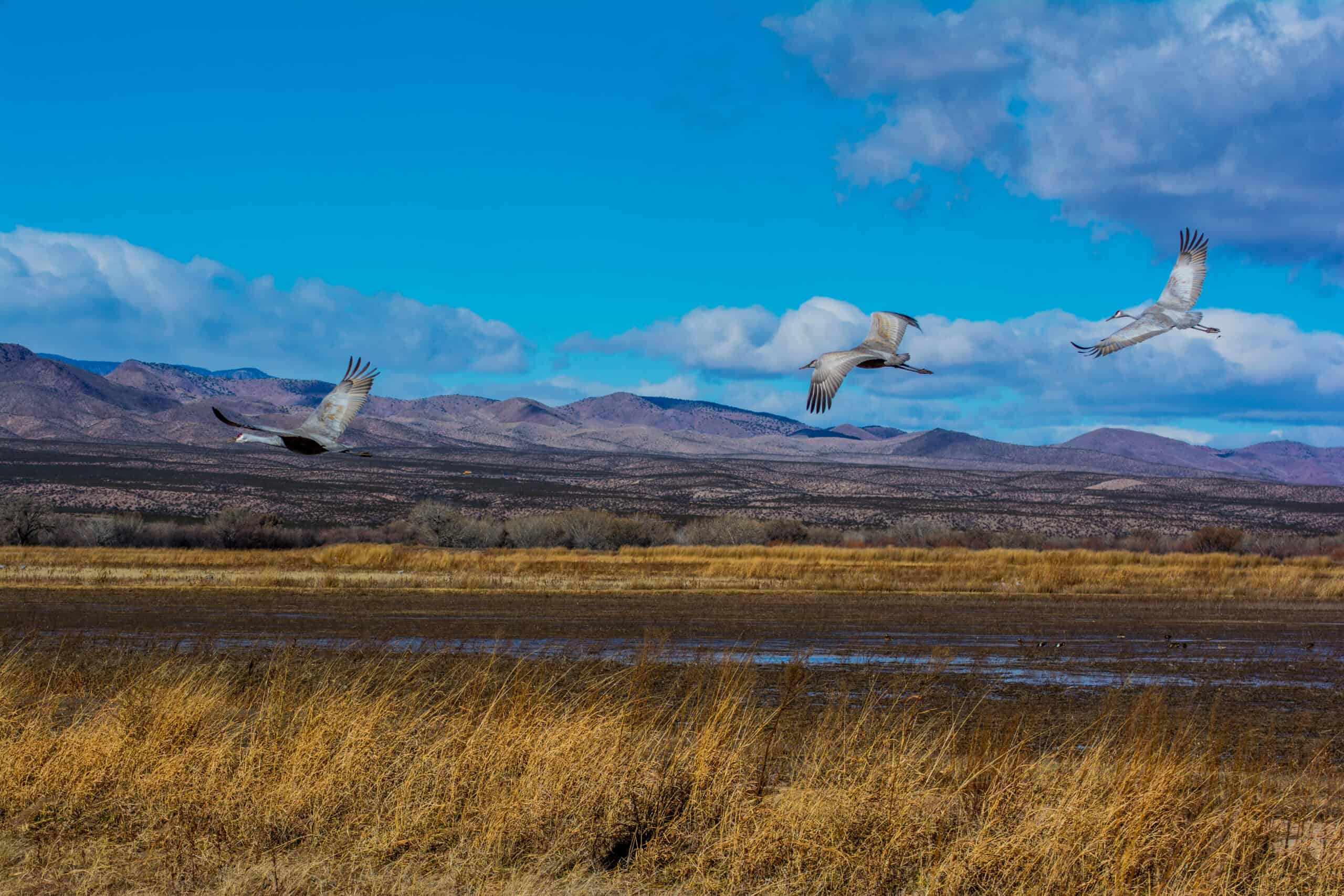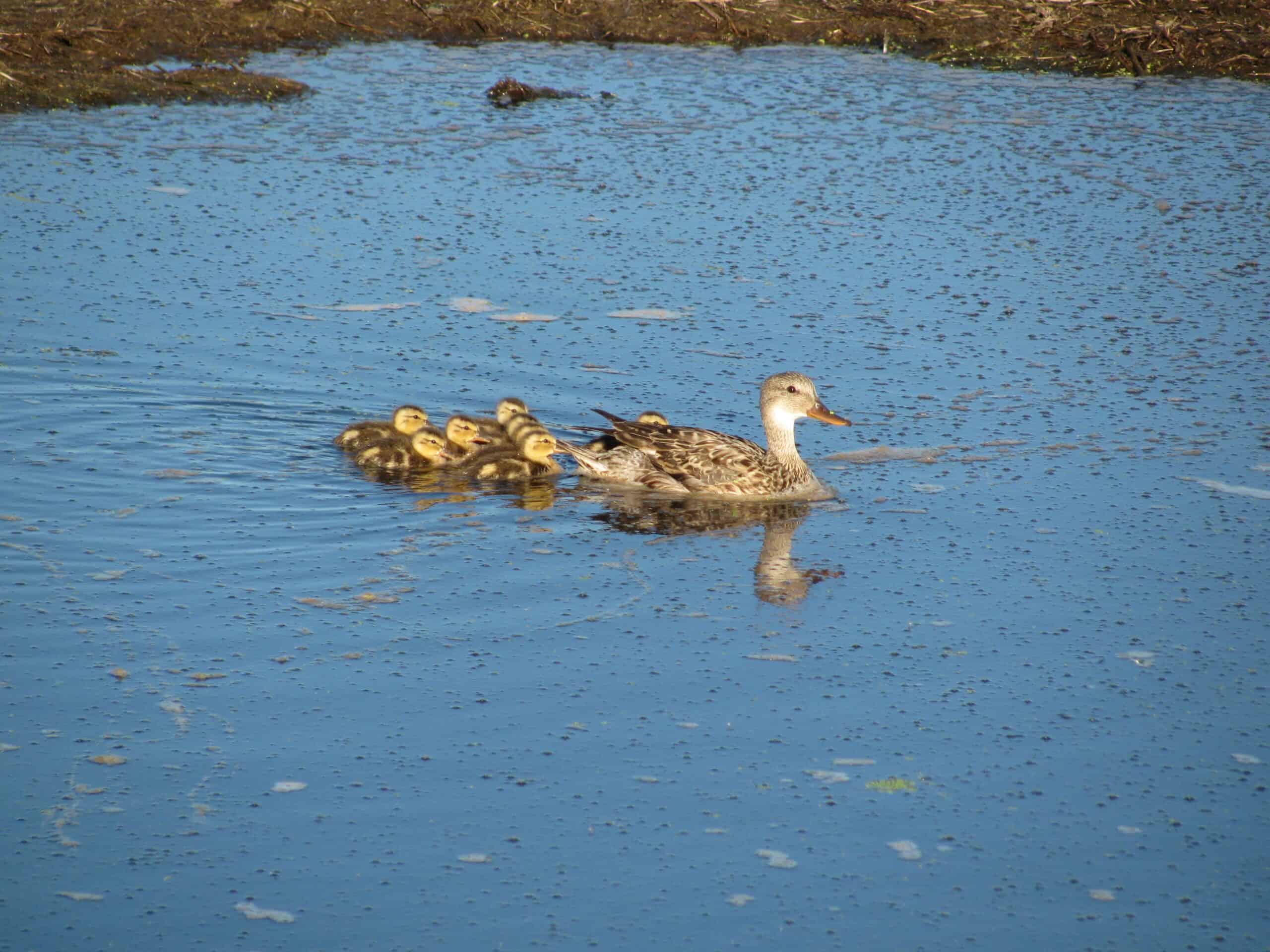Share this article
Wildlife Featured in this article
- Sandhill crane
- Whooping crane
Artificial water sources help migrating cranes
Reservoirs, stock ponds and flooded meadows provide water in parched landscapes
Cranes make use of novel sources of water as they move across the landscape on their yearly migrations.
A pair of recent studies reveal how both whooping cranes and sandhill cranes make use of artificial water sources as they make long migrations across the Great Plains and arid West. The findings could have implications for water management in a part of the United States where water is often scarce.
Researchers looking at greater sandhill cranes (Antigone canadensis tabida) found the birds make use of irrigated grass hay patches as they make their way across West.
“The population really benefits from the availability of water in those landscapes,” said Patrick Donnelly, a landscape ecologist at the U.S. Fish and Wildlife Service and the Intermountain West Joint Venture.
In an initial study published in Agriculture, Ecosystems & Environment, Donnelly and his team first characterized how much of the Intermountain West—a region between the Rockies and the ranges of eastern California, Oregon and Washington state—was taken up by grass hay agriculture. This unique type of farming’s effects on the ecology of migrating birds is understudied, Donnelly said. When ranchers divert water to seasonally flood their fields, some of the water is absorbed into the ground, recharging aquifers that sustain wetland habitats in riparian floodplains.
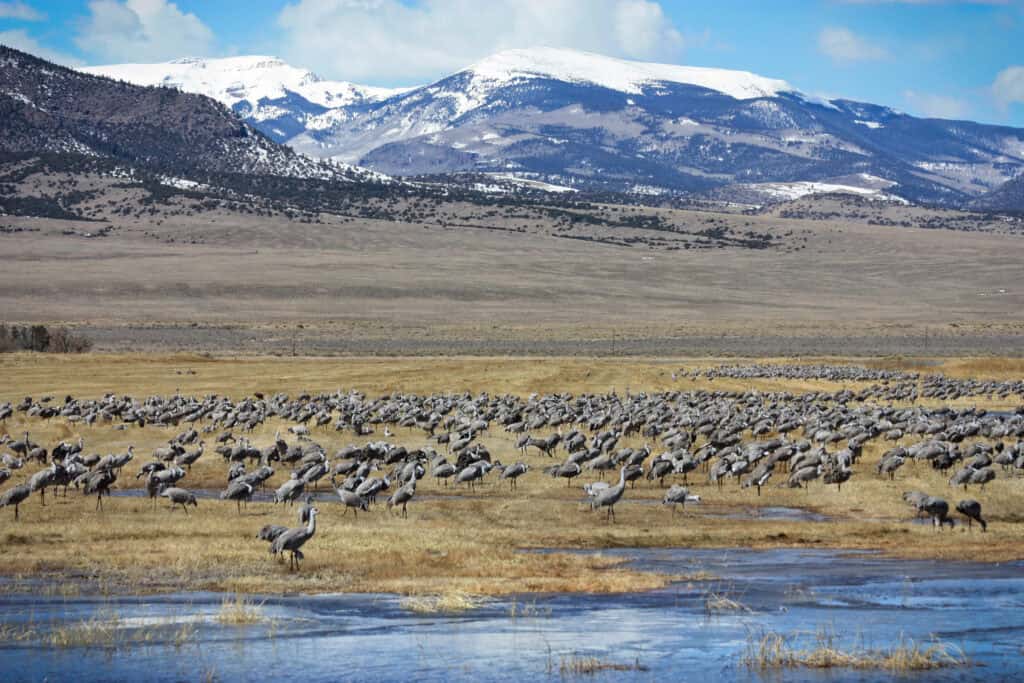
Using satellite imagery collected over the past 15 years, Donnelly and his team analyzed monthly flooding patterns. They found that 2.5% of the irrigated footprint in the Intermountain West was taken up by this kind of agriculture. While this may seem small, the wetlands created by grass hay farming represented up to 60% of the temporary wetlands in this semi-arid region.
In a follow-up study published recently in Ecology and Evolution, Donnelly and his colleagues captured greater sandhill cranes from 2016 to 2022 in New Mexico, Idaho, and Arizona and fitted them with GPS tracking devices. These devices revealed where cranes aggregated and settled down to breed and raise their young in the northern end of their migratory range, and where they stopped over on their migrations both northwards and southwards.
The results showed that up to 93% of the grass hay meadows the team identified in the earlier study were in core sandhill crane summering areas. The birds are using these areas to forage for food.
Whooping reservoirs
Meanwhile, in another study published recently in Conservation Science and Practice, TWS member Aaron Pearse, a research biologist with the U.S. Geological Survey, and his colleagues compared how whooping cranes (Grus americana) used the landscape during migrations in both drought and non-drought conditions.
They found that in Texas and Oklahoma—the southern corridor of the migration—cranes were making use of artificial water sources like reservoirs and stock ponds during drought years. Damming small, intermittent streams for agriculture or other purposes also provided the birds— considered endangered by the U.S. Fish and Wildlife Service—with sanctuaries during their migrations.
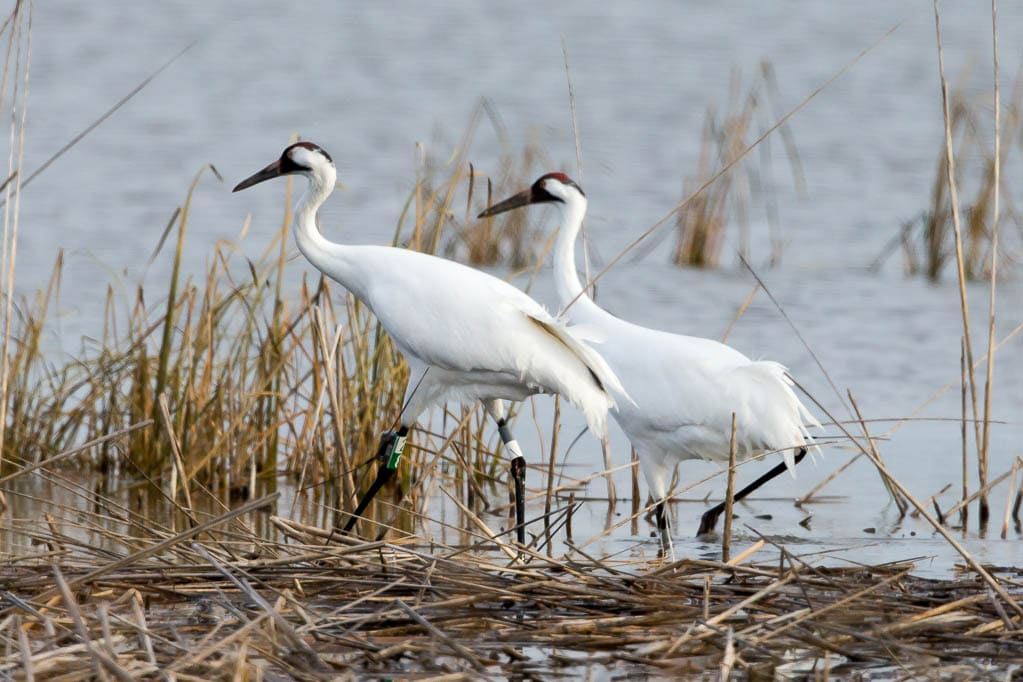
But this wasn’t true across the board. In the northern parts of their migration corridor, wetlands with a history of cultivation were used less during drought conditions, reflecting reduced drought resilience there compared to undisturbed wetlands. This means that during drought conditions, the whooping cranes used these areas less, Pearse said.
“Whooping cranes definitely shifted the different types of habitat they would use from non-drought to drought times,” Pearse said.
Management implications
For whooping cranes, these findings might have implications for conservation partnerships for the U.S. Fish and Wildlife Service, Pearse said. Many reservoirs are managed by the U.S. Army Corps of Engineers or by municipal governments for city drinking water.
“There’s an opportunity to maybe talk with those folks,” Pearse said.
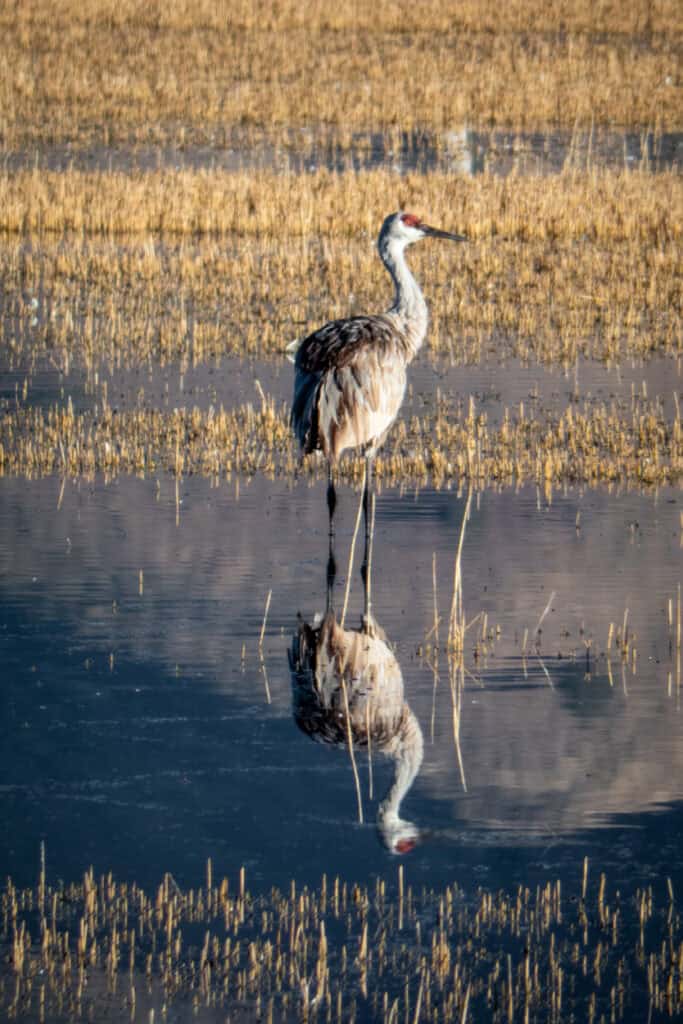
For greater sandhill cranes, Donnelly said that grass hay agriculture is mimicking the natural way that water used to spread out on the floodplains. These seasonal wetlands not only provide foraging habitat for cranes. They also eventually seep into the ground to replenish underground aquifers or runoff to bolster waterways downstream.
“You get this suite of ecosystem services just from this one practice,” Donnelly said.
As battles over water use heat up in the Intermountain West, he said it’s important to consider that agricultural practices like grass hay farming may be beneficial for water retention and ecosystems. Incentives in the Farm Bill can also help these ranchers can boost natural resource protection.
“[We need to] protect those systems in the future and not accidentally throw the baby out with the bathwater,” he said.
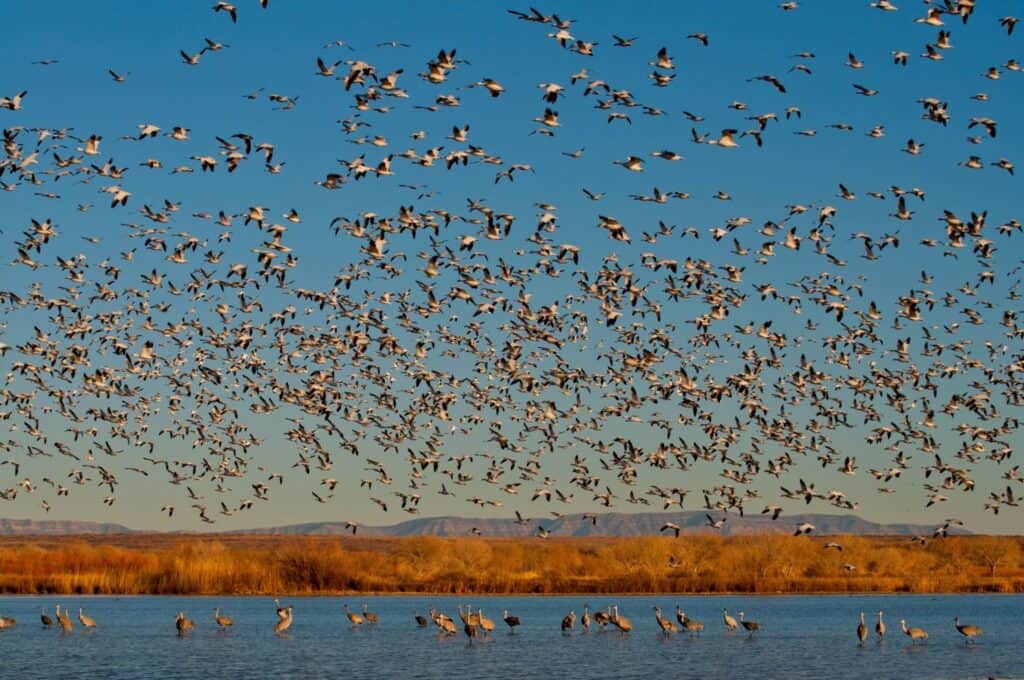
Header Image: Sandhill cranes fly over a wetland. Credit: Paul Tashjian



